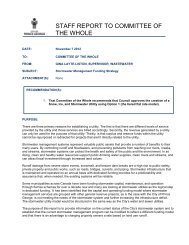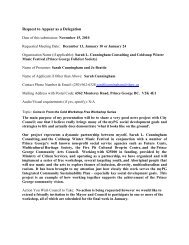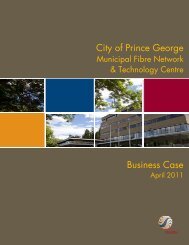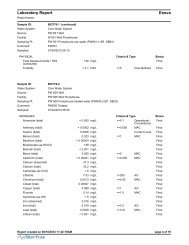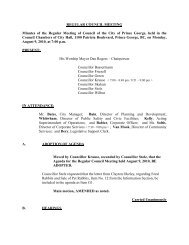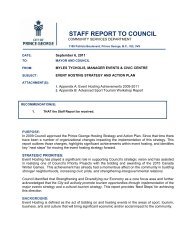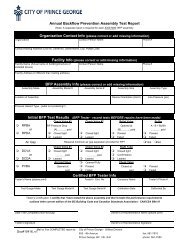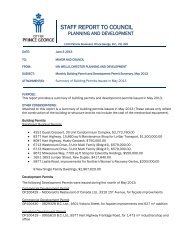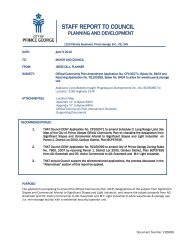Blackburn Wastewater Treatment Plant Upgrade Study
Blackburn Wastewater Treatment Plant Upgrade Study
Blackburn Wastewater Treatment Plant Upgrade Study
Create successful ePaper yourself
Turn your PDF publications into a flip-book with our unique Google optimized e-Paper software.
SECTION 2.0<br />
III MITIGATION MEASURES<br />
2.1 INTRODUCTION<br />
Snowmelt and rainfall that enters a sanitary sewer during wet weather periods can be<br />
categorized as either inflow or infiltration. Inflows are due to direct connections of<br />
rainfall and/or snowmelt and contribute to rapid flow increases, whereas infiltration is<br />
due to indirect sources and produces delayed flows and extended flow increases.<br />
Therefore, inflows are critical for short high intensity as well as for long duration<br />
storms; infiltration would be critical for Iong duration events. Since prolonged wet<br />
weather, due to winter thaws and spring raidthaw conditions, is quite normal in the<br />
BIackbum area, both inflow and infiltration (III) contribute significantly to the<br />
overloading of sanitary sewers.<br />
Excessive H places significant peak flow demands on the sanitary sewer system.<br />
Retrofit measures such as upgrading capacity of pipes, pumpstations, and treatment<br />
facilities can substantially increase the cost of providing sewer service. On the other<br />
hand, realizing the significance of yI and impIementing a program of L'l reduction can<br />
extend the life of facilities by deferring the need to upgrade hydraulic capacity.<br />
Controlling excessive amounts of VI is the single largest demand-side management<br />
issue for any wastewater collection system. Therefore, a planned yI investigation and<br />
analysis methodology can be adopted to: detect and identify these It1 sources on a site<br />
specific basis; quantify their comparative impacts; find appropriate mitigative<br />
measures on a prioritized basis; and implement policies that promotes the reduction of<br />
excessive UI.<br />
A Mica1 I/I mitigation work plan methodology recognizes that:<br />
Within the sewer network, major VI sources can be 'leaky' manholes, poor pipe<br />
joints, poor senice connections, and failed pipes.<br />
High ground water table during wet weather periods can create high hydraulic<br />
heads, which result in continuous UI through the defective components of the<br />
sewer network.<br />
A significant portion of UI is often generated within private property.<br />
Since a major source of the UI can be generated on individual lots, the potential<br />
costbenefits of implementing I/l reduction measures on private property should be<br />
part of the solution.




